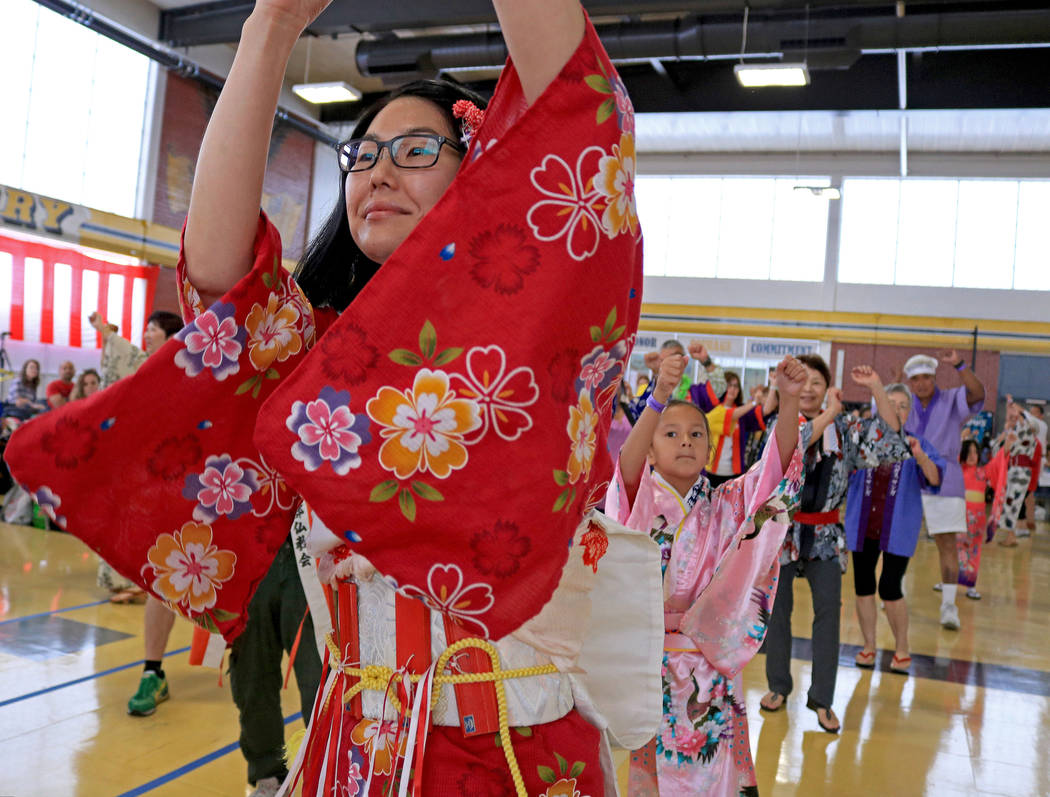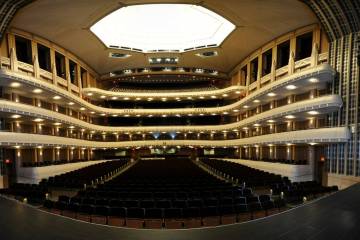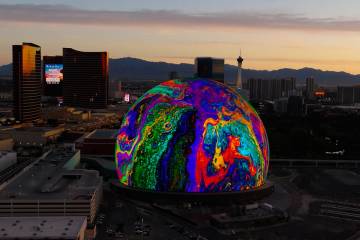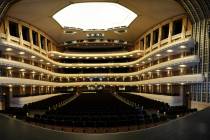Japanese cultural fest brings traditional dance to Las Vegas
Dressed in everything from T-shirts to kimonos, dancers young and old waved their arms left and right with precision Saturday while walking in a circle to the beat of a taiko drum.
They were celebrating their ancestors at the Japanese Buddhist Obon Festival at Ed W. Clark High School, where attendees watched and joined in the dance, ate traditional Japanese food such as fried octopus balls and mochi, and perused crafts for sale.
“This is a celebration, a thank you, for all that our ancestors have done for us,” said Wayne Tanaka, a founder of the Las Vegas Buddhist Sangha, which organized the 29th annual festival expected to draw 2,000 people.
The Las Vegas event lasts only a few hours, but back in Hawaii, where 37-year-old Jarand Iwase lived until two years ago, the festival runs for weeks.
Iwase, a fourth-generation American with Japanese roots, brought his nephews Jace, 10, and Jayden, 7, to the festival to share a culture he said he honors.
“Obon dances are big in Hawaii, and I didn’t even realize (Las Vegas) had one. I’ve been here for two years,” he said. “So it was something I wanted to experience again. It’s always good to be in touch with your culture to me.”
Sharing those traditions with children is becoming especially important as families marry cross-culturally, Tanaka said, adding it helps define a sense of identity for those children.
That’s what Sharis Takasane-Kam said she wants for her children, Charyanna, 18, and Kieryella, 9. Though Takasane-Kam is entirely of Japanese heritage, she said her husband’s ancestry is a mix of Japanese and Hawaiian.
“As they get older, a lot of times they lose interest,” she said. Bringing her children to the Obon Festival fosters continued interest, Takasane-Kam added.
Performers from across the U.S., including Hawaii, led a group of at least 50 participants in 13 traditional dances. Each tells a story, said Michiko Yamamoto, 70, of Las Vegas.
The final dance of the festival, Kyushi Tanko Bushi, was the coal miner’s dance. The movements, meant to replicate digging coal and pushing mining carts, tell the history of the Fukushima region of Japan, she said.
“At most of the festivals, they dance it because people know it so everyone can jump in and dance,” Yamamoto said.
Yamamoto has been dancing since she could walk, she said. Same goes for Helen Nutting, 76, who said donning a kimono and practicing the tradition takes her back to when she was a child.
Contact Jessie Bekker at jbekker@reviewjournal.com or 702-380-4563. Follow @jessiebekks on Twitter.
The 29th-annual festival ran from 10 a.m. to 4 p.m. at the Ed W. Clark High School on Penwood Avenue. In addition to dance, the festival included a singing of the national anthem and exhibition from craft vendors.








































